32 min read
| February 23, 2021
Skinfluencers: How to Sell on Social Media Requested Content
Written by: Influencity
Skincare has historically been an important part of people’s lives. But how people found and purchased skincare products has changed in recent decades. What has long been a field full of family secrets espoused by mothers and grandmothers, celebrities and glossy magazines has now become more accessible. Skincare content today can be found right in the palm of your hands. Skinfluencers are the new normal when it comes to recommending, reviewing and informing people about skincare and skincare products.
The 2020 Covid-19 pandemic saw a huge boom for skinfluencers, with people turning in droves to their favorite online influencers to discover their beauty routines. With people stuck in their homes, makeup products weren’t used as much. Instead, people turned their focus to a new topic: skincare.
What is Skincare?
Skincare is a diverse field. People across the world have different skin types, complexions, skin issues and goals for what they want their skin to look like. Thankfully, there are enough skin care influencers to meet everyones needs.
Skinfluencers teach people about their skin – everything from what kind of skin they have to what kind of products they should be using. They teach their audiences about active ingredients, how to read product labels, the benefits of using different products, and how they affect their skin.
For brands, this is an opportunity to find a lucrative sales channel by leveraging the power of skinfluencers. The most popular kind of content is skincare routines. Celebrities, social media influencers and even lifestyle vlogs showcase their skincare routines.
Such content has grown massively in popularity, leading to increased sales for skincare products.
Data from Statista shows that in 2020, skincare products generated nearly 17 billion USD, with the most popular product being skin cleansers. The data also shows that 52% of people in the US use skincare products on a daily basis.
Skincare in Influencer Marketing
Brands are now aware of the power of influencer marketing when it comes to generating leads and boosting sales. When it comes to skincare, this holds truer than ever.
The rise of beauty and skincare began in the early days of YouTube, when bloggers would showcase their makeup skills. Since then, Instagram and TikTok have emerged as potent platforms that drive sales more than any other platform.
In 2020 especially, TikTok skinfluencers showed off their prowess in promoting skincare products among their followers. For platforms like Instagram and TikTok, the primary market includes millenials and GenZers.
These two age groups have been considered the hardest for brands to market to. That’s no surprise given that they are the generations known for conducting their own research on products they buy. Out of all previous generations, millenials and GenZers are the most likely to go out of their way to pore through various skincare brands and look for reviews and recommendations.
This makes influencer marketing platforms like Instagram and TikTok a great lure for brands and businesses. If you want to showcase your skincare products to the upcoming generations, who also happen to have huge disposable income, then influencer marketing is a great strategy.
Why? Skinfluencers on these platforms are great at connecting with their audiences. The best way to build followers on TikTok, Instagram and YouTube is authenticity. People want to find content that they resonate with. And by being authentic, the skinfluencers on these platforms can grow their following, while also educating their followers.

Research shows that the largest group of consumers for beauty and skincare products were the Asian countries, at 41%. Coming in second was North America at 24% and other Western countries came in third at 18%.
Leveraging Opportunity: Harvesting From the Growth of Skinfluencers
The global skincare market in 2021 is projected to be worth 155.8 billion USD. By 2025, this number is expected to grow to 189.3 billion USD.
As skinfluencers continue to grow, they are bound to be key drivers in lead conversion for skincare brands.
The power of this type of influencers has already been felt by the skincare industry. Two skincare brands – Cerave and Vaseline, saw an unprecedented growth in sales figures thanks to skinfluencers on social media platforms.
Cerave increased their commitments by 309% and Vaseline by 377%. They achieved these results without spending an additional dime on their digital marketing campaigns. They didn’t change their formulas, didn’t create new products designed to boost sales, and didn’t approach celebrities or top magazines with the objective to boost sales. So, what happened?.
Skinfluencers. Influencers on platforms like Instagram and TikTok spoke about the benefits of using these products, which subsequently lead to a boom in their sales. And that’s the power of influencer marketing.
Within the skinfluencer niche, the current trend is towards promoting affordable skincare products. Skinfluencers want to promote skincare products that a large portion of their follower-base can purchase. Instead of luxury brands that are difficult for many people to buy, skinfluencers want to showcase products that people can buy and use in their everyday life.
Aside from promoting these products, make it a priority to discuss each product they promote in detail. They talk about the active ingredient in each product, and the benefits and disadvantages of each ingredient. If they think that a certain ingredient is harmful, they’ll be sure to let their followers know. This brings more authenticity to their content, and helps their followers resonate with them more. By building trust with their audience, they in turn, bring increased sales for the skincare brands they collaborate with.
Last year, skincare was the second largest industry in the beauty market by market share revenue, at 23.7%.
With nearly 62% of women following beauty influencers, turning to skinfluencers to generate sales is becoming necessary for skincare brands that don’t want to lose out on sales targets.
How to Find Skinfluencers for Influencer Marketing Campaigns
It isn’t enough for skincare brands to collaborate with skinfluencers. They need to find the right skinfluencer to work with.
Different skinfluencers fall under different niches. They have different kinds of followers and promote different kinds of products.
Instead of only looking at the follower count and previous collaborations of a skinfluencers, view also their engagement rate and interactions.
Different influencer marketing platforms are used to create different kinds of content as well. The three social networks for skincare products are Instagram, TikTok and YouTube.
- Instagram: This platform is used by a diverse age group, primarily dominated by millenials and GenZers. Content creators make use of pictures, Instagram reels, stories, videos and hashtags to distribute content.
- TikTok: Mostly used by GenZers, with the being the dominant age group on the market. The primary form of content distribution is in the form of small videos, picture shows and tutorials.
- YouTube: Used by every age group, the content here is more accessible to people across all age ranges. However, the skincare niche is currently dominated by millenials and GenZers, with older generations running a few channels. Video tutorials and informative content reign on this platform.
A skincare brand first needs to assess which niche they fall into. To do this, try asking yourself a few questions, for example:
- Who is my target market?
- What kind of skincare products do I want to market and who is most likely to purchase them?
- Do I want to work with a macro or a micro skinfluencer?
- What is my purpose behind collaborating with a skinfluencer? (Ex: Increased sales figures, building brand loyalty etc.)
Audiences across these influencer marketing platforms prefer authenticity over glossy advertisements. The skinfluencer you choose should be capable of connecting and communicating with their audiences effectively.
Certain skinfluencers choose to work with only certain kinds of skincare products. Some choose affordability, while others only opt for organic products. Doing research on different skinfluencers will help you isolate who will be the best match for your brand profile.
Let’s look at three skinfluencers on Instagram and how they connect with different audiences:
- Rosshanna: Rosshanna Bracho uses the handle @mm.blogg on Instagram and has around 238K followers on the platform. She promotes various kinds of skincare products, from creams to serums. She also talks about the benefits of each product, and showcases how they reflect on her skin. As a prolific poster and skincare enthusiast, she has build a following who trust and value her opinion. Skincare brands who want to promote everyday skincare products will find a powerful collaborator in Rosshanna. If you’d like to see her full stats, click here.
2. Monica Veloz: Monica Veloz uses the handle @monicastylemuse, is American and has around 355K followers on Instagram. Her content is a boon for colored women, and she regularly makes posts on skincare and makeup for colored skin tones. Brands looking to promote their skincare products to colored women can opt for a skinfluencer like Monica. If you’d like to see her full stats, click here.
3. Arianna Calvitti: Arianna Calvitti is a popular skinfluencer with around 238K followers on Instagram. She uses the handle @unmondoingreen and is known for posting skincare content that her followers can utilize and make use of in their own lives. Arianna regularly promotes skincare products and brands that she likes. Over time, she has built a following that relies on her for skincare advice. Brands that want to increase their sales with the help of a trusted skinfluencer should consider turning to an influencer like Arianna. If you’d like to see her full stats, click here.
Is it difficult for your brand to find the right skinfluencer to work with? Why not consider using Influencity’s ‘discovery product’ feature?
This influencer marketing technology’s filters will enable you to find the right match for your influencer marketing campaign. Look through niche profiles to find the right match today!
Authenticity in Social Networks
Despite the many benefits of using skinfluencers in influencer marketing, there’s a downside that brands need to be aware of. Content creators on influencer marketing platforms like Instagram heavily rely on aesthetic appeal and the use of filters.
This can make the final picture look heavily edited and not reflect the actual benefit of using the skincare product. Creator Sasha Pallari recently took to social media to launch the #filterdrop campaign.
There, she spoke openly about how skinfluencers should either not use filters on their sponsored skincare posts, or mention the name of the filter they’ve used. This is to drive authenticity to followers, who often can’t achieve the results they see on their screens.
She also approached the UK’s Advertising Standards Authority. Following this, the ASA stated that the use of filters can mislead people. They have since then banned the use of filters in skincare and makeup promotions that appear to be misleading.

In this publication we see on the left is Sasha Pillari’s natural skintone, and on the right is her skin under the ‘Paris’ filter.
The use of filters in skincare marketing distorts the actual effect of the product being promoted. For consumers, this sets unrealistic expectations that won’t reflect in real life.
This can be a problem for skincare brands. If a consumer finds that a certain product isn’t giving them the effect that a skinfluencer showcased it would, they are unlikely to buy the product again. While filters can make a skinfluencer look more appealing, using them while promoting skincare products is detrimental when it comes to long term sales.
Users today are looking for skinfluencers who bank on authenticity, who tell them the truth about the products they use. Using a filter here showcases that the skinfluencer may not be feeling confident enough in their appearance despite using the promoted skincare product. After all, people can’t use filters to hide blemishes or flaws in real life.
Skincare brands should prioritize authenticity in skinfluencer marketing. The rise of skinfluencers has given skincare brands the opportunity to create large numbers of new leads and boost sales. When done right, skinfluencer marketing can generate higher sales figures than traditional marketing.
Skinfluencer marketing is emerging as a lucrative opportunity for skincare brands everywhere. This is the time to leverage their power to build awareness and gain returning customers for your brand!.
Other posts you might be interested in
View All Posts
7 min read
| June 9, 2023
Influencer Marketing Campaigns: What They Are and How to Launch a Successful Campaign
Read More
Otros
7 min read
| October 5, 2022
How to Reach Out to Influencers for Collaboration: Dos and Don'ts
Read More
influencer marketing
10 min read
| September 26, 2022
